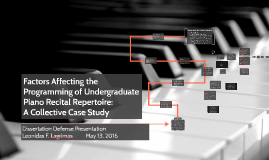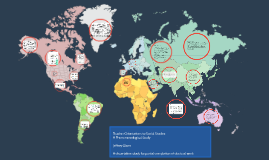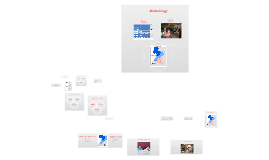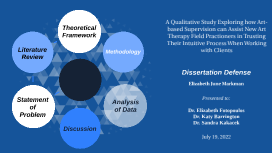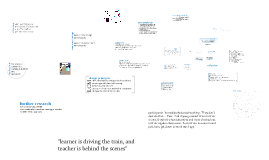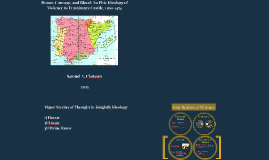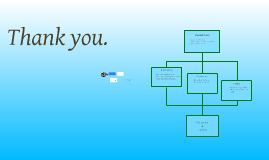dissertation defense presentation
Transcript: purpose literature context research questions research methods findings implications future research reflection constructivist learning theory design based research "engineer innovative educational environments and simultaneously conduct experimental studies of those innovations" (Brown, 1992, p. 141) case study analysis SCRATCH artifact analysis pre-/post-test analysis interview transcript analysis text analysis (1) carefully read through all transcripts (2) reread each transcript; create notes (3) generate list of themes from notes (4) translate themes into codes; code data (5) categorize themes (6) create categorical codes (7) organize data based on categorical codes (8) make meaning from organized data cross-case analysis slight decrease in scores little evidence of content in Scratch artifact substantial evidence of frustration learn math the "regular way" decrease in scores substantial evidence of content in Scratch artifact motivation: "I got to do math but in a fun way." "making a surprise for somebody else" lower post-test scores more sprites, blocks, scripts "one of the leaders" "got lost in the project" participants "immediately started working. They don't ever do that.... Ever. And if you go watch them in their rooms, they're the least attentive and most checked out in their regular classrooms. So for them to come in and just, bam, get down to work was huge." "learner is driving the train, and teacher is behind the scenes" reflection selected references Brown, A. L. (1992). Design experiments: Theoretical and methodological challenges in creating complex interventions in classroom settings. The Journal of the Learning Sciences, 2(2), 141-178. Collins, A. (1992). Toward a design science of education. In E. Scanlon & T. O’Shea (Eds.), New directions in educational technology. Berlin: Springer-Verlag. Design-based Research Collective. (2003). Design-based research: An emerging paradigm for educational inquiry. Educational Researcher, 32(1), 5-8. Fitzpatrick, E. (2007). Innovation America: A final report. National Governors Association: Washington, D. C. Forgione, P. (1998). Achievement in the United States: Progress since a Nation at Risk? U. S. Department of Education, National Center for Educational Statistics, Center for Education Reform and Empower America: Washington, D. C. Harel, I., & Papert, S. (1991). Constructionism. Norwood, NJ: Ablex Publishing Corporation. Lagemann, E. C. (2002). An elusive science: The troubling history of education research. Chicago: University of Chicago Press. Ma, Y., & Harmon, S. W. (2009). A case study of design-based research for creating a vision prototype of a technology-based innovative learning environment. Journal of Interactive Learning Research, 20(1), 75-93. Matthews, W. J. (2003). Constructivism in the classroom: Epistemology, history, and empirical evidence. Teacher Education Quarterly, 30(3), 51-64. Merriam, S. B. (1998). Qualitative research and case study applications in education. San Francisco: Jossey-Bass. Miles, M. B., & Huberman, A. M. (1994). Qualitative data analysis: An expanded sourcebook (2nd ed.). Thousand Oaks, CA: Sage. National Council of Teachers of Mathematics. (2006). Curriculum focal points for prekindergarten through grade 8 mathematics: A quest for coherence. Reston, VA: NCTM, Inc. Papert, S. (1990). Constructionist learning. Cambridge, MA: MIT Media Laboratory. Piaget, J. (1980). The psychogenesis of knowledge and its epistemological significance. In M. Piattelli-Palmarini (Ed.), Language and learning. Cambridge, MA: Harvard University Press. Phillips, D. C. (1995). The good, the bad, and the ugly: The many faces of constructivism. Educational Researcher, 24(6), 5-12. Richardson, V. (2003). Constructivist pedagogy. Teachers College Record, 105(9), 1623-1640. Schoenfeld, A. H. (2004). The math wars. Educational Policy, 18(1), 253-286. Stager, G. S. (2002). Computationally-rich constructionism and at-risk learners. Paper presented at the Seventh World Conference on Computers in Education. Copenhagen, July 2001. Tesch, R. (1990). Qualitative research: Analysis types and software tools. London: Falmer Press. particularistic psychological descriptive a design-based research inquiry of constructionism in practice sample (Piaget, 1980; Phillips, 1995; Stager, 2003; Richardson, 2003; Matthews, 2003) (Papert, 1990; Harel & Papert, 1991) multiple sources of data member checks long-term observation peer examination bracketing biases audit trail rich, thick descriptions (Merriam, 1998) (Perkins, 1986) data sources allows multiple learning paths for students encourages self-directed learning promotes collaboration creates an alternative method of assessment changes the role of the teacher (Miles & Huberman, 1994) use Scratch for LCM of math content constructed interviews teacher's role learner's role learning SCRATCH time equipment characteristics K-12 DRS practitioner: Mrs. H. 8 5th grade Tier 3 math students 7 weeks: 25 mins/day design






